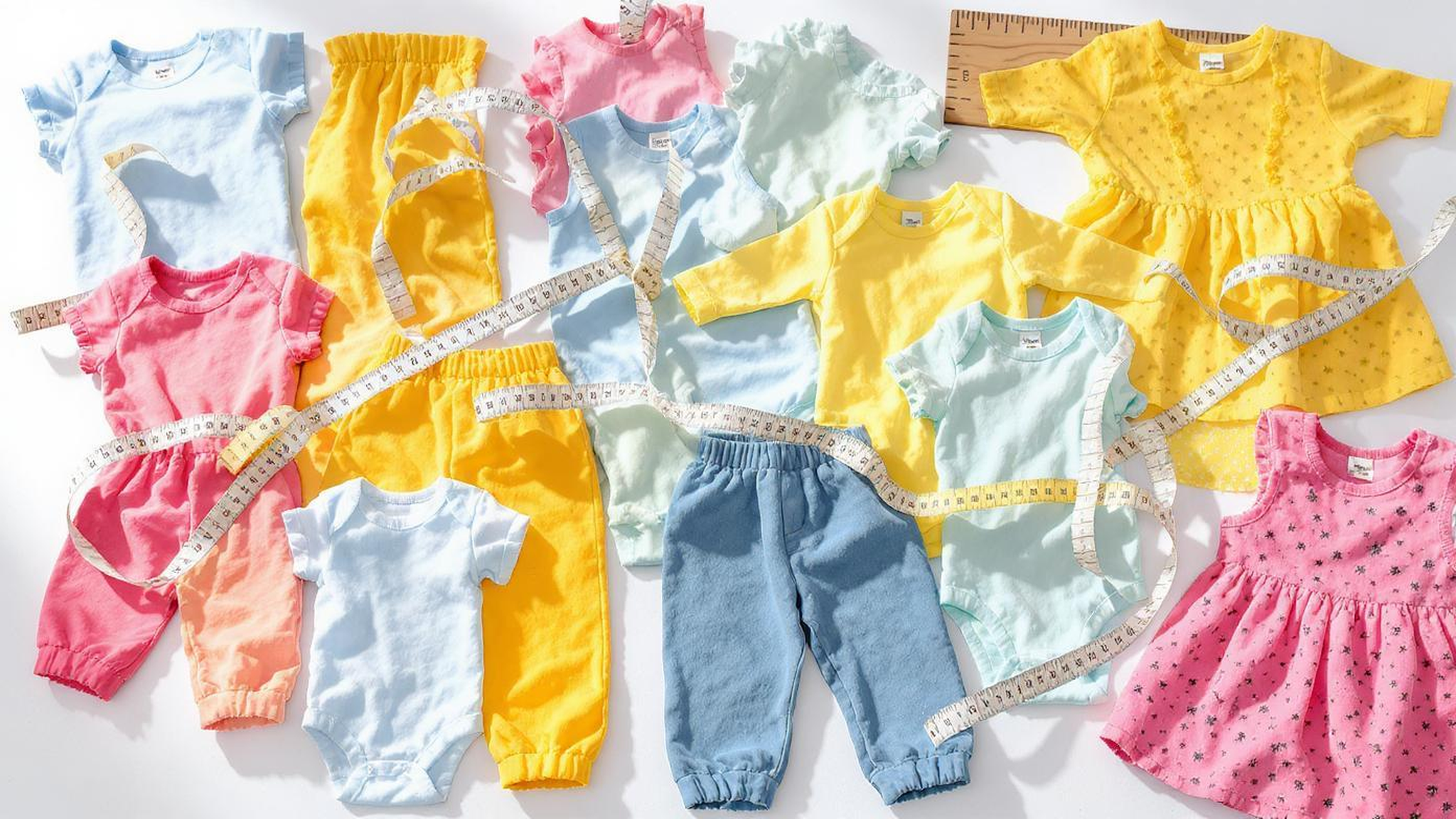Look, I’m tired. Just got off a 14-hour call with a client whose entire kids’ line got returned because the pants were too short on 6X kids. Not too tight. Too short. Like, comically short. The kind of thing you see in a sitcom, not a $200K launch.
And it wasn’t the factory’s fault. Wasn’t the designer’s. Wasn’t even the fabric.
It was the size chart.
They used a generic one. Copy-pasted from some blog. Didn’t account for growth patterns, regional differences, or real kid proportions. And now they’re scrambling, losing money, and worse—losing trust.
So yeah, I’m writing this at 2 a.m., coffee gone cold, because if you’re reading this, you’re probably one bad batch of returns away from a meltdown.
Let me save you the pain.
This isn’t fluff. This is the real childrens clothing size chart — the kind we use at Fexwear when we build lines for brands across the US, UK, and Australia. No guesswork. No “kind of fits.” Just data, experience, and the kind of clarity that keeps your customers happy and your margins intact.
If you’re serious about kids’ apparel — whether you’re a startup or scaling up — start here: Fexwear – Your Leading Sportswear Supplier & Manufacturer. We’ll get you through this.
The Real Problem With Kids’ Sizing (And Why You’re Losing Money)

You think sizing is about numbers. It’s not.
It’s about growth spurts, proportional chaos, and the fact that a 4T from Carter’s doesn’t fit the same as a 4T from Gymboree — even if they’re both labeled “38–41 inches.”
And here’s the truth no one wants to say: most brands don’t measure real kids.
They scale down adult patterns. They copy competitors. They use age as a proxy for size — which is like using shoe size to predict height.
And then they wonder why returns spike.
At Fexwear, we’ve seen it all. A client in Canada sent us a “perfect” sample — looked great on paper. We tested it on five real 5-year-olds. Three couldn’t zip the jacket. One had sleeves past his fingertips. The other? Pants looked like capris.
Why? Because the chart didn’t account for arm length growth or torso proportions in early childhood.
So let’s fix this. Not with theory. With actionable data.
Sizing Isn’t Standard — It’s Strategic
You’re not just picking a size. You’re predicting a child’s body over the next 6–12 months.
Because kids grow 2–3 inches per year between ages 2–12. And it’s not linear. One month they’re fine. The next, their pants are tight at the waist and short at the hem.
That’s why growth allowance matters.
Not just “add 1 inch for ease.” Real growth allowance — built into the pattern grading, not just the fabric stretch.
We use anthropometric data from real children, not averages from 20 years ago. And we adjust for garment type:
- School uniforms? Less ease.
- Winter jackets? More room for layers.
- Dancewear? Snug but mobile.
If you’re not doing this, you’re flying blind.
And if you’re relying on a single brand’s chart? Stop.
The Hidden Cost of Bad Sizing
Let’s talk money.
A $1.20/yd fabric might seem cheaper than $1.80/yd. But if it causes 8% more returns, you’re losing $9,200 on a 10,000-yard order — just in unsellable inventory.
And that’s before shipping, restocking, and customer service.
We worked with a Shopify brand last year. Their kids’ leggings had a 22% return rate. Why? Waistband too tight, inseam too long. They were using a generic size chart.
We rebuilt their grading with real hip and waist measurements, added graded elastic, and introduced a fit sampling program with real kids.
Returns dropped to 6%. Sales went up 3x in 90 days.
That’s not magic. That’s measurement.
Want to avoid that kind of disaster? Start with real data — like our Fabric Recommendations for Sportswear guide, which includes performance metrics that actually matter.
The Truth About Children’s Size Categories (Spoiler: Age Means Nothing)
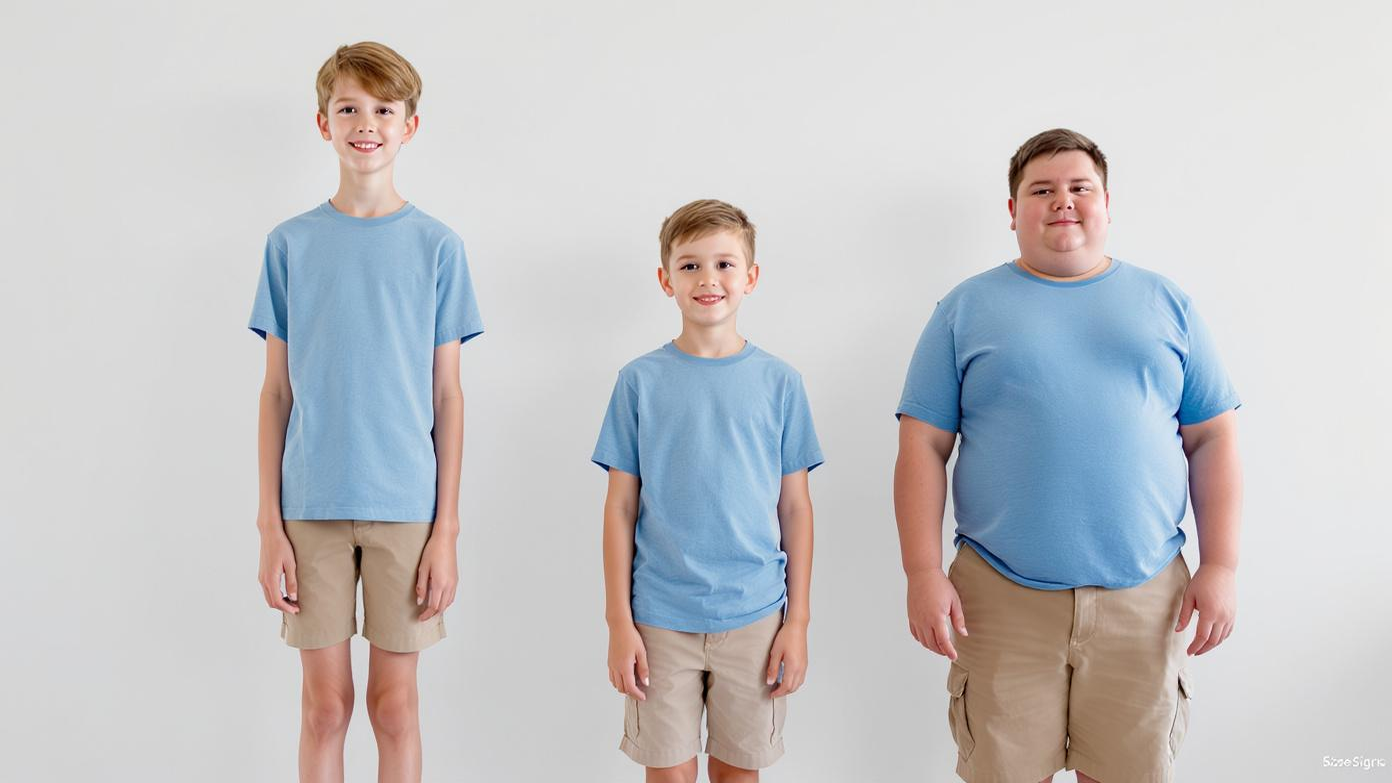
You’ve seen the labels: 2T, 4, 6X, XS.
But here’s the dirty secret: age is the worst way to size kids.
A 4-year-old can be 34 inches or 42 inches tall. One weighs 30 lbs, the other 40. Are they the same size? Hell no.
Yet brands keep using age as the primary guide.
Stop.
Use body measurements. Always.
Here’s how we break it down at Fexwear — not by age, but by growth stage and proportional development.
Baby Sizes (Preemie to 24 Months)
This is the most standardized category — because newborns don’t vary as much. But even here, preemie and low-birth-weight babies need special lines.
Pro tip: If you’re making sleepers or bodysuits, length is critical. A 1-inch difference can mean the snaps don’t close.
We had a client in Australia whose 0–3M rompers were returning because the leg snaps were straining. Why? They used Carter’s chart — but their fabric had less stretch. We adjusted the pattern, added 0.75” to the rise, and returns dropped to 3%.
Small change. Big impact.
Toddler Sizes (2T to 6T)
Now the chaos begins.
“T” stands for Toddler, not “Tiny.” And these kids are growing fast — not just taller, but wider, with changing proportions.
Key insight: Toddlers grow faster in height than width early on. So a 4T might fit the waist but be too short in the leg.
And here’s the kicker: 4T ≠ Size 4.
Size 4 is for little kids. 4T is for toddlers. Different proportions. Different grading.
Mix them up? You’ll get complaints.
Little Kid (4 to 6X)
This is where brands start to lose it.
You’ve got:
- Size 4
- Size 5
- Size 6
- Size 6X
And no, 6X is not just “a bigger 6.” It’s taller and heavier.
We had a client who thought 6X was just a “wide” 6. Nope. It’s a tall size.
They made 6X with the same inseam as 6. Parents said the pants looked like capris.
We extended the leg by 1.2”, graded the hip and waist, and added a tall fit tag.
Returns dropped. Reviews improved. Lesson learned.
Big Kid / Tween (7 to 16)
Now you’re in the wild west.
Puberty hits. Growth spurts. Some kids are 4’10” at 10. Others are 5’2”.
And sizes? All over the place.
And yes, some brands go to 18 or 20 for larger frames.
But here’s the real issue: fit consistency.
A size 10 girl’s waist might be 28”. A size 10 boy’s? 26”.
If you’re making unisex styles, you need gender-specific blocks.
Or offer slim, regular, and husky fits.
Otherwise, you’re setting yourself up for returns.
How to Measure a Child (And Why Your Factory Should Care)
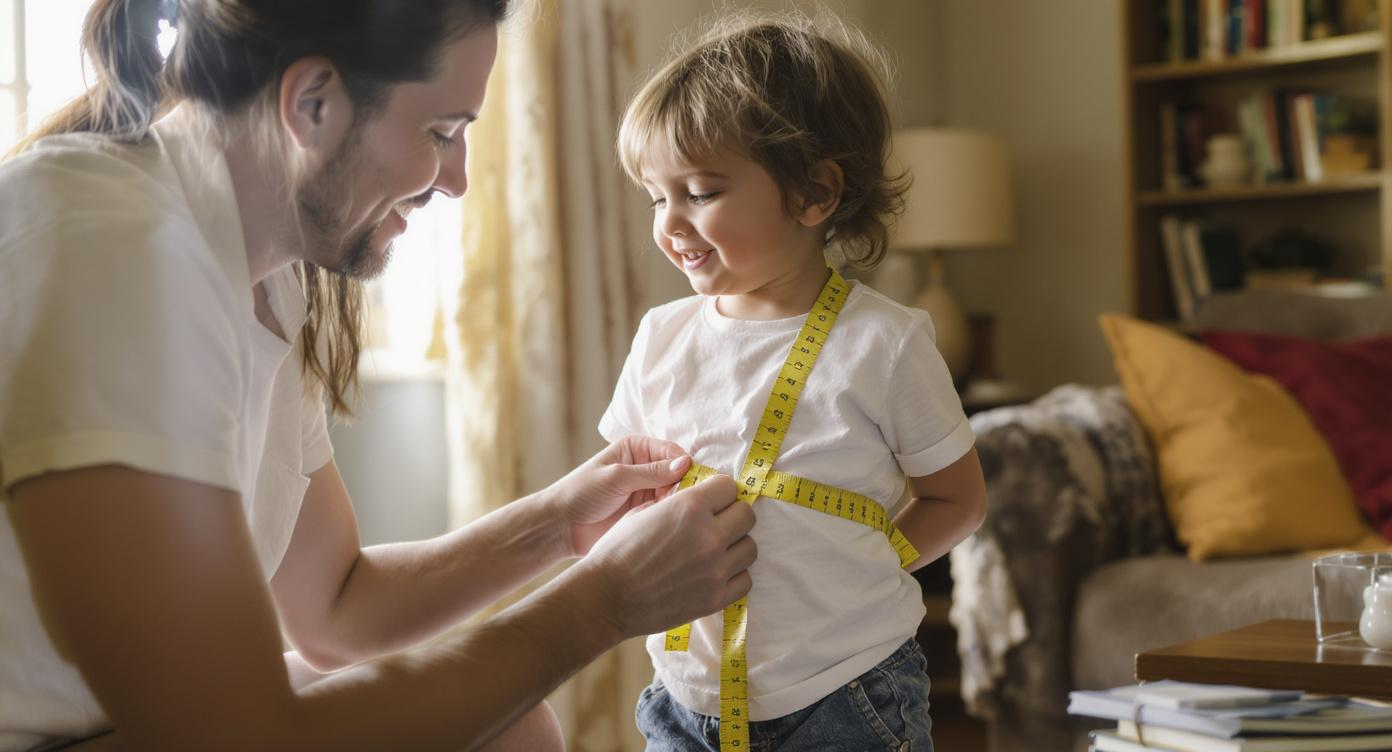
You can’t size kids by guessing.
You measure them.
And not just once. You measure multiple kids in your target age group.
Here’s how we do it at Fexwear — and how you should too.
The 6 Key Measurements That Actually Matter
- Height – Barefoot, against a wall. Critical for inseam and torso length.
- Chest – Around the fullest part, under arms. Add 1–1.5” for ease.
- Waist – 1” above the belly button. Not the hips.
- Hips – Fullest part of the seat. Crucial for pants and dresses.
- Arm Length – Shoulder to wrist, arm slightly bent. Affects sleeve fit.
- Inseam – Crotch to ankle. Often ignored, always important.
Real example: A client made kids’ jackets with sleeves based on age. At 5T, they used 14”. But real 5T kids had arm lengths from 13.2” to 15.1”.
Some sleeves were too short. Others hung past the fingers.
We regraded using actual arm length data, added a sleeve adjuster for growth, and included fit notes on the label.
Problem solved.
Pro Tips for Accurate Measurement
- Use a flexible tape measure — not a rigid ruler.
- Measure over light clothing, not bare skin.
- Record everything digitally — no sticky notes.
- Test fit on real kids, not just mannequins.
- Add growth allowance — 1–1.5” in key areas.
And here’s the one thing no one talks about: fabric behavior.
A cotton-poly blend stretches differently than 100% cotton. Knits recover. Wovens don’t.
If you’re not testing your fabric after washing, you’re risking shrinkage.
We had a line of school polos that shrank 8% in the wash. Parents were furious.
Now we pre-shrink all fabrics and test dimensional stability.
Want to avoid that? Check our Fabric Recommendations for Sportswear — it’s not just for activewear. The principles apply to any kids’ clothing.
Why Brand-Specific Sizing Is Everything
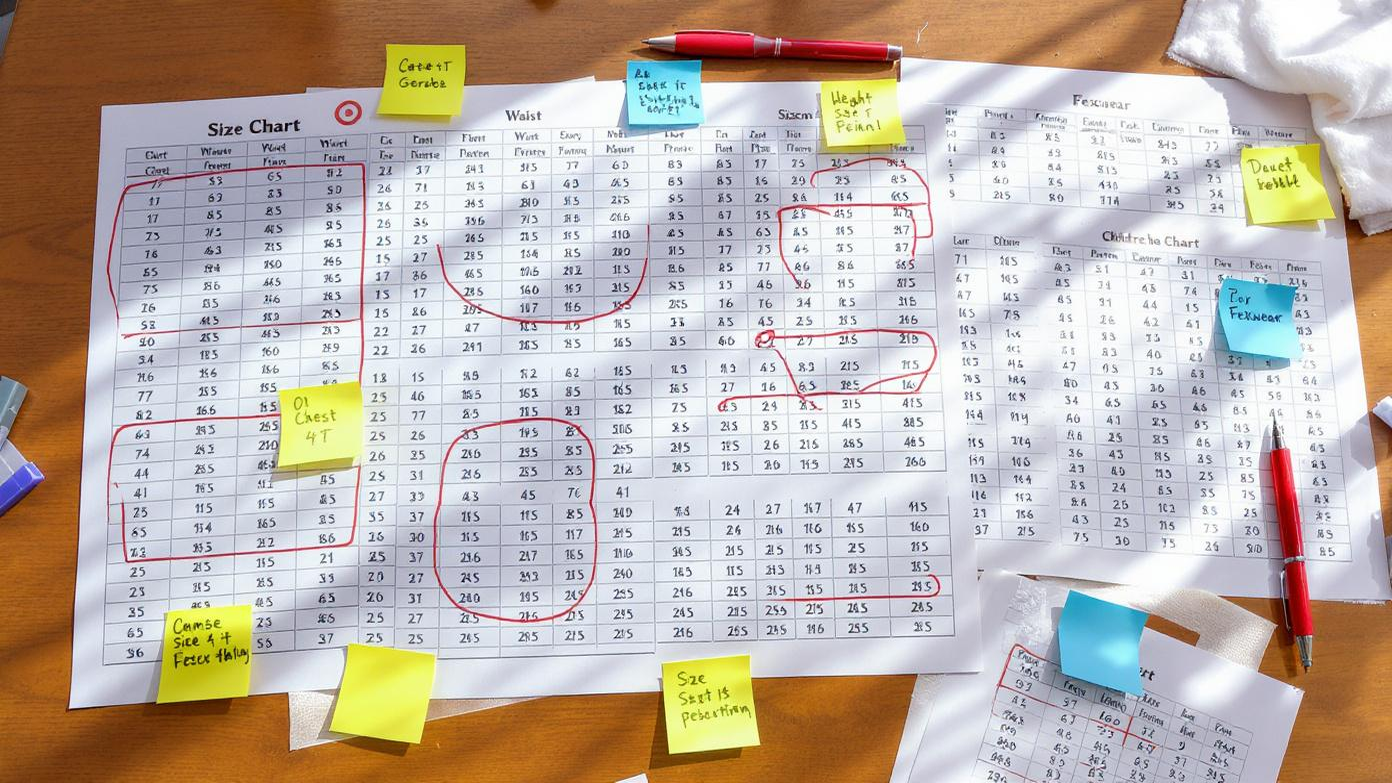
You can’t use Carter’s chart for your brand.
You just can’t.
Because Carter’s 4T fits kids 38–41” tall, 34–38 lbs.
Gymboree’s 4T? 39–42” tall, 34–39 lbs.
Slight difference. Huge impact.
And that’s not even touching Old Navy, Target, or Gerber.
So here’s what we do:
Brand-by-Brand Breakdown (Real Data)
See the spread?
Now imagine your factory uses the lowest number. Or the highest.
You’ll be off.
And returns will pile up.
What This Means for Your Brand
You need your own size chart.
Not a copy. Not a guess.
A chart based on:
- Your target market
- Your fabric
- Your fit model
- Real kid measurements
We help clients build custom charts — from scratch.
We’ll measure 10–20 kids in your demographic, test 3–5 fabric samples, and create a graded spec pack that your factory can use.
No more “kind of fits.”
Just fits.
And if you’re building a private label line, check out our OEM/ODM Private Label Service — we handle the entire process, from idea to delivery.
International Sizing: Don’t Screw This Up
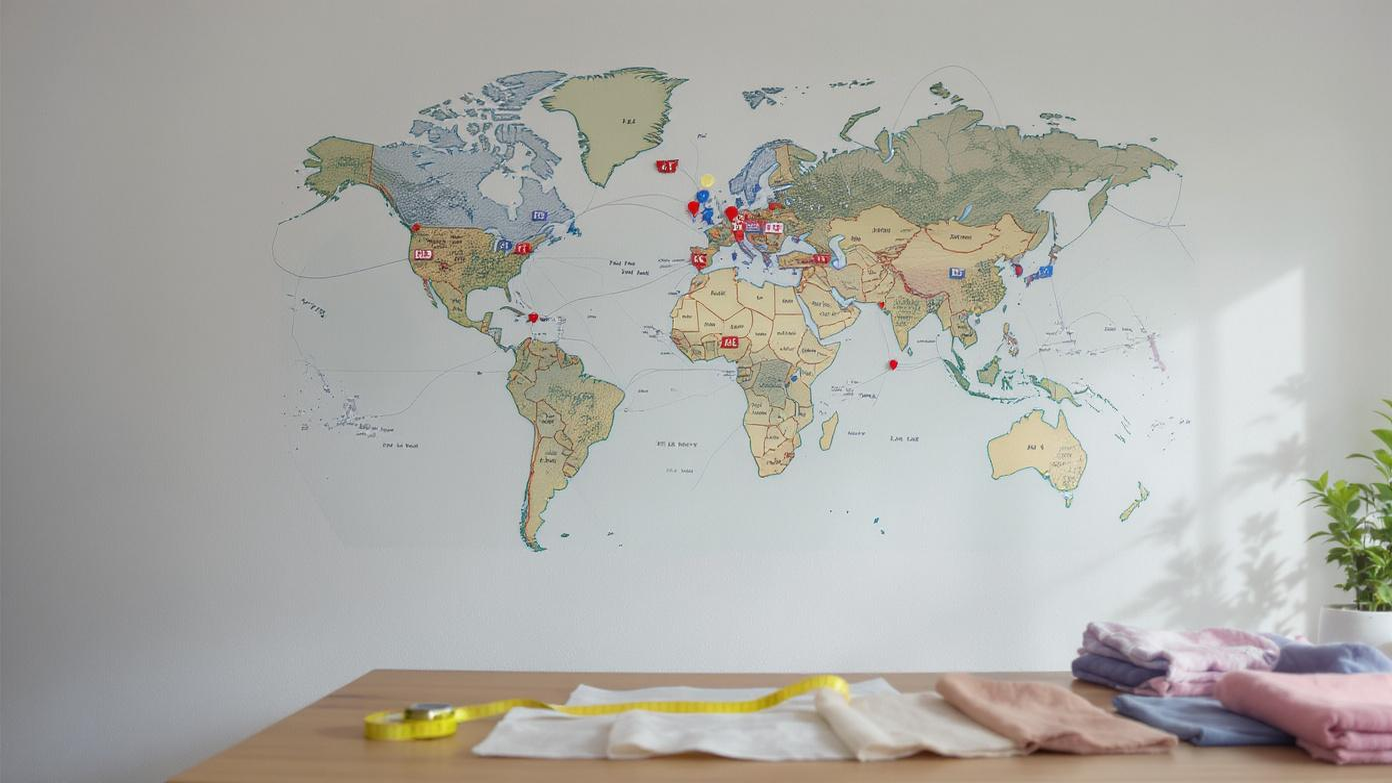
You want to sell in the UK? EU? Australia?
Then you need international conversions.
And no, you can’t just Google it.
Because EU sizes are based on height in cm.
US 4T = EU 104 cm (fits 100–104 cm tall kids)
US 6 = EU 116 cm
US 8 = EU 128 cm
UK sizes use age ranges:
US 4T = UK 3–4 years
US 6 = UK 5–6 years
AU is similar to UK but not identical.
Pro tip: If you’re exporting, label both.
“Size 6 / EU 116” on the tag.
Otherwise, you’ll get returns from confused parents.
And trust me, I’ve seen it.
Wrap-Up: One Thing That Will Save Your Brand
Look, I’m not here to sell you a magic solution.
I’m here to tell you this: fit is everything.
Not the logo. Not the color. Not the Instagram campaign.
If the clothes don’t fit, you lose.
And it’s not just returns. It’s trust.
A parent buys your hoodie. It’s too tight. They don’t buy again. They tell their friends.
That’s how brands die.
So measure real kids. Build real charts. Test real fabrics.
And if you’re overwhelmed?
We’ve been there.
Fexwear has helped over 5,000 brands get this right.
We’ll do it for you too.
FAQs
1. How often should I update my size chart?
Every 6–12 months. Kids change. Fabrics change. Markets change.
2. Can I use adult grading rules for kids?
No. Kids grow differently. Use pediatric anthropometry.
3. Should I size up for growth?
Yes — but strategically. Add length, not just width.
4. How do I handle fabric shrinkage?
Pre-shrink and test. Always.
5. Do I need different blocks for boys and girls?
Yes, especially after age 6.
6. What’s the most common return reason?
Too short in the leg. Always.
7. How do I test fit properly?
On real kids. Multiple body types.
8. Can Fexwear help me build a custom size chart?
Yes. Let’s talk.
Call to Discussion
I’ve been in factories at 3 a.m. fixing patterns because someone thought “4T is 4T everywhere.” I’ve seen brands lose six figures over a misgraded waistband.
So if you’ve been there — if you’ve held a pair of pants that just… didn’t fit — I want to hear your story.
What was the worst fit mistake you’ve seen? What did you learn?
That’s my reality check. What’s yours?

